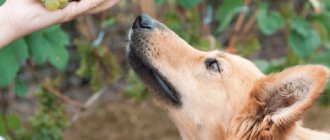Not all cat lovers pay attention to the age at which a kitten is separated from its mother. However, this factor deserves attention. Many people believe that it is better to pick up the baby early in order to promptly accustom him to cat litter, the food that he will constantly eat. But these are misconceptions. There is an optimal age for weaning a kitten from a cat, which ensures smooth adaptation and reduces the risk of various problems. It is worth studying the features of the development and upbringing of children in different periods in order to make the right decision.
Kittens up to a month old
It is strictly not recommended to adopt a kitten that is less than a month old. At this age the pet:
- cannot develop properly without mother's milk;
- needs survival lessons from mom;
- unable to independently understand the environment.
Mother cat, together with breast milk, provides babies with a complete supply of micro- and macroelements necessary for development and strengthening the immune system. No artificial nutrition can be a high-quality replacement for natural food. In addition, kittens that are among brothers and sisters next to their mother receive their first important skills. Before a month, babies do not have time to learn all the necessary lessons. The presence of a cat makes it easier for kittens to get used to the tray and complementary foods.
Bowls and food
You will need a bowl for water and two more for food. The bowl for water should be deep, for dry food - medium depth, for wet food you can choose flatter bowls. However, do not buy bowls that are too deep - it will be difficult for a small kitten to eat and drink from them. The bowls you buy for your baby should under no circumstances be plastic: they are absolutely not hygienic.
First of all, you should buy high-quality dry food for kittens. You can feed the kitten only wet food, but it is more expensive: if the kitten doesn’t finish it, you will have to throw everything away. It is recommended to mix wet and dry food in the diet in a 1 to 1 ratio: for example, give wet food for breakfast, and feed dry food for the rest of the day.
The water in the bowl should not be stagnant: it must be changed every day!
Kittens under two months of age
There is no need to rush to take home a baby at the age of 1-2 months. This is not the best time to part with your cat. In the period up to 2 months, kittens acquire important skills. A well-mannered mother teaches her kids:
- use a scratching post rather than upholstered furniture;
- go to the litter box;
- use claws and teeth for their intended purpose;
- eat complementary foods;
- Follow cat hygiene rules.
It may seem that the owners can teach all this. But experts rightfully claim that cats are much better at this upbringing. The kitten learns all these rules without stress and learns them better.
There are also anatomical features that prevent kittens from being weaned at the age of 2 months. At this time, babies are vaccinated to build immunity. But the protective system does not strengthen immediately. This requires 2-3 weeks. The process is faster and better if the kitten is with its mother and receives an additional supply of antibodies with her milk.
Natural food recipes
There are two options for feeding natural food: monofeeding and mixes. Monofeeding involves eating one or two types of meat, usually in noticeably large pieces. Mixes are mixtures of different types of meat and offal with other ingredients. Before serving, the meat is frozen in the freezer for at least 3 days in portioned bags. Before serving, defrost and warm naturally to room temperature. If you need to heat it up quickly, you can put the bag in water at room temperature.
A scheme that you need to follow to plan the diet and ensure that the cat is always fed.
- We plan the menu a week or two in advance, if freezer space allows. We calculate how much a cat should eat per day, multiply by the number of days for which it should be enough. From this number of kilograms we calculate how much muscle meat and hearts should be, how many organs, how many meat bones and how many vegetables. Convert percentages to grams (kilograms). Based on this, we write a shopping list. It is not necessary to calculate down to the gram; an approximate proportion is sufficient. For example, a cat weighs 5 kg, 5% per day of his body weight = 250 g. To create a menu for a week, you need to multiply 250 g by 7 days, we get 1750 g. Of this, a third (about 580 g) are meat bones, half (875 g) is muscle meat, the rest (about 300 g) is organs or organs with a pinch of grated vegetables. Based on this, you need to buy, for example, 580 g of chicken necks, 875 g of hearts or thighs and 300 g of stomachs at the market or supermarket. It is enough to calculate the proportion once and follow it. If the animal is growing, then we weigh it every week and adjust the numbers.
- We go to trusted retail outlets or order the required amount of products on the Internet. We stock up on small bags or containers for laying out the meat.
- If we make mixes, then we throw in muscle meat, meat bones and organs, and vegetables. All this can be pre-ground in a meat grinder or cut into small pieces, or you can leave it in the form of large pieces if the cat can chew them. When monofeeding, we do the same thing, only we put one or two types of meat in each bag. We weigh each bag on a kitchen scale. One packet can equal one serving or a daily serving for two meals.
- We put the bags in the refrigerator. It is advisable to write on them the start date of freezing or mark it somewhere so as not to forget.
- When the right time comes, take out the bag and defrost the meat. Serve your cat food at room temperature.
- When there are 3-5 bags left in the freezer, we do everything again: buy, chop, freeze.
To make it easier to create a menu, here are recipes for natural food for cats. Each owner can make his own using the correct proportions. But there are also ready-made ones from specialists.
Assorted
Turkey legs - 1 kg, heart (pork, beef, chicken, turkey) - 1 kg, turkey liver, beaten and cut chicken necks - 1 neck per bowl, grated seasonal vegetables (for example, carrots or pumpkin) - pinch, dried kelp (added just before serving).
Chicken mix
Chicken thigh meat - 25%, chicken breast meat - 25%, chicken backs and necks twisted in a meat grinder - 25%, chicken heads twisted in a meat grinder - 5%, chicken liver - 5%, chicken hearts and gizzards - 10%, cauliflower - 1%, grated pumpkin - 1%, grated cucumber - 1%, grated apple - 1%, kelp (dried seaweed) - 0.3%, piece of trout - 1%.
Turkey mix
Turkey thigh meat - 25%, turkey breast meat - 25%, turkey necks - 30%, turkey heart - 5%, turkey gizzards - 10%, cauliflower - 1%, pumpkin - 1%, zucchini - 1%, apple - 1%, lingonberry - 0.5%, kelp - 0.3%, trout oil - 0.2%.
Healthy cats should not be served meat in the form of soups, broths, minced meat or pate. The cat should eat pieces - small, medium or large. Large ones are preferable if the cat can handle them.
EXPERT COMMENT: VETERINARIAN-FELINOLOGIST YULIA BROVKO
Optimal age: three months
Most experts agree that the best time to wean a cat is three months. There are good reasons for this assertion. By this time, the kitten has developed a strong immune system and has certain skills. Three month old babies:
- have social skills and easily get used to strangers;
- know how to eat solid food and drink independently;
- Carefully lick the fur and wash.
At this age, it is not difficult to instill in a kitten the rules of cat etiquette. Mom has already taught him to go to the litter box, all that remains is to show him where he is. The baby will quickly master the scratching post if the cat has used such a device. An important advantage is the high-quality functioning of the digestive system, which already digests solid food.
By this age, the kitten’s immunity is fully formed. In addition, he has already received the first vaccinations against rhinotracheitis, chlamydia, calcivirosis, rabies, panleukopenia, and has been treated for helminths. Consequently, the new owner will not have problems, and the risk of the baby getting sick is minimal.
Why you can’t separate a newborn kitten from its mother
First of all, this can have a bad effect on the health of both mother and baby. At this time, the newborn and his parent are going through (both physically and emotionally) a very stressful period, both instincts are acutely triggered, so separation can have a strong negative effect and become too much stress for them. Such trauma can affect a pet's continued physical and emotional well-being throughout their life.
In addition, a kitten that has just been born is a helpless creature, incapable of independent life. Therefore, until the cat teaches him all the essentials and until his body reaches a certain stage of development, they cannot be separated. If you want your future pet to be healthy and developed, do not take a newborn kitten home, let it grow and get stronger.
Skills that a cat passes on to a kitten
The cat takes care of her cubs from birth and gradually teaches them everything they need for life so that they can cope on their own. Therefore, kittens are separated from the cat at three months of age, when they have learned all of the following:
- The first skills that kittens learn when their eyes open are walking on their four legs and reacting to the appearance of strangers and possible danger.
- Mom teaches not only how to “prick up your ears,” but also how to interact with people, animals and objects. Behavioral skills instilled by a cat mother help the baby adapt to different situations and prepare for further independent existence.
- A cat begins to learn the basics of personal hygiene when her child reaches one month of age. She shows how to properly wash your face, groom yourself thoroughly, and thoroughly brush your fur. The kitten also learns hygiene procedures after eating and going to the toilet.
- The kittens, which are stronger by the month of birth, following their mother’s example, learn to walk around, exploring the territory of the home. Exploring new territories, a necessary skill for any animal, is also passed on from a mother cat to her babies.
- Another important skill for a pet is to go to the toilet in a certain place. Using her personal example, the cat shows the cubs that they need to relieve themselves and empty their intestines in a special tray.
Having learned these lessons from the parent and mastered key skills for adulthood, the kitten is able to move on with its life on its own.
Hurry up, choose a box and find out what gift awaits you
Discount on pet insurance
Promo code copied to clipboard
Negative psychological factors of early weaning
According to statistics, in 80 cases out of 100, when adopting a kitten before three months of age, minor and medium-sized problems arise. In the remaining 20 babies they had a serious form. More than a third of pets separated from their mother too early acquire the habit of sucking on pillows, soft toys, and blankets. 40% of kittens have an aggressive attitude towards people. Many babies, separated from their mother before 2 months, are too timid, afraid of sounds, strangers, and do not adapt well to a new environment. Such pets often exhibit psychoneurotic dysfunctions.
Up to 3 months, kittens undergo the formation of their main organs and systems; during this period they receive the main lessons from the cat, learn to contact the external environment and people. A pet that has not gone through this important period in a familiar society with its mother, sisters, and brothers often:
- does not comply with the rules of cat hygiene;
- difficult to switch to regular diet;
- He is disobedient and poorly trained in the litter box.
A serious problem is the psychological stress experienced by children who have not undergone social adaptation next to their mother. They are hit by several negative factors at the same time. They are deprived of the guarantees of safety that a cat provides, they are surrounded by foreign objects, smells, sounds, they do not know how to properly explore this area and look for a reliable shelter. No matter how caring the owner is, he will not be able to explain all these wisdom to the kitten the way a mother would.
Adult cat
Cats do not always end up with new owners at a young age. There are different situations, among which there are also those when both mature and already elderly animals are looking for a home. In such cases, people often think about the problems that they may encounter when taking into their home an adult, fully formed animal with its own habits and outlook on life. We will talk about such difficulties in this chapter.
Finding a common language with an unfamiliar adult cat is a difficult but doable task.
Let’s make a reservation right away: by adults we mean those cats that have already reached one year of age. So, there are two main scenarios in which an adult cat ends up with new owners:
- the animal was found on the street;
- the animal was taken out of breeding and put up for sale by the breeder at a deep discount.
Stray cats
If the background of a stray cat is unknown to you, and, most likely, it has never lived under the same roof with a person before, then you will probably encounter a number of difficulties in trying to domesticate the animal. It is difficult to accustom mature cats to a litter box, scratching post and other household things that these animals have never dealt with and simply cannot rebuild themselves.
Taming a stray cat requires self-discipline and certain skills from a person
Accustoming such cats to the rules of living at home can take a lot of effort, nerves and time. Therefore, it is recommended to take on such a task only if you already have some experience in raising felines. Also, do not forget that stray cats are more predisposed to aggression in order to protect themselves, so expecting such a pet to immediately settle on your lap and purr is pointless.
Before adopting a stray pet, it is important to undergo a full veterinary examination.
It is also important to remember that a stray cat may have hidden illnesses that need to be identified as soon as possible. Therefore, the first thing you need to do after “adopting” such a cat is to take it to the veterinarian and get all the tests done.
Video - How to tame a stray cat?
Cats from catteries
Cats, of course, leave catteries in disproportionately better condition than those from the streets. However, it is important to keep in mind that not all breeders treat their pets humanely and care about their well-being; therefore, “sold” individuals may later develop various health problems, and, in particular, with reproductive systems. This is especially true for females who may have been used for mating too often in order to produce kittens.
Catteries often sell off mature cats that can no longer participate in breeding work.
In order to take a good mature cat from a cattery, you must first study the history of the breeder you are contacting. It is also recommended to visit his nursery and look at the animals in general.
Possible health problems
Significant problems can also arise with the health of a pet that is separated from the cat for up to three months. During this period, the most important processes in the formation of organs and systems take place. The presence of breast milk eliminates the deficiency of essential minerals, vitamins, and other microelements. This allows the digestive system to establish the production of enzymes necessary for food processing, gradually, in a normal manner. A kitten that begins to eat regular food before the age of three months may experience various disruptions in the gastrointestinal tract. This often becomes the cause of chronic diseases.
It is known that cats have good health; their bodies cope with many diseases on their own, without medical help. These qualities are ensured by the strong immunity that nature provides to animals. The body of a newborn kitten is practically deprived of this natural defense and cannot produce antibodies to fight pathogenic microbes and bacteria. They come to babies from mother's milk. If kittens are deprived of this source too early, immunity does not have time to form and strengthen. Consequently, a favorable environment is created for the development of infections and inflammations.
Veterinary pharmacology includes vaccinations to strengthen the natural defense system. But they can only be done at 2 months. After this, the kitten remains defenseless against these aggressors for some time; it still requires help in the form of mother's milk. Therefore, babies who were taken before three months often get sick.
How to ensure a smooth transition to a new home?
Owners should take care in advance so that when the time comes to separate the kittens from the cat for good, they can be given into new hands without harm to the mother and her cubs. Here are key tips you can follow to ensure a smooth transition for your pet to a new home.
Gradually separate mother and child
It is worth starting the baby’s adaptation to life without a mother gradually. So, after 4 weeks, he is weaned off his mother’s milk, giving him a little complementary food (wet food, low-fat fermented milk products and tender chicken). Also, the woman in labor and her offspring are separated for short periods of time, placing the baby in a nook with its own tray and bowl. A substitute for mother's milk is poured into a bowl and the kitten is taught to lap from there on its own.
Take care of your sad mother
By regularly taking away babies who have achieved basic independence for a while, you will get the mother accustomed to their subsequent absence. This will also affect the amount of milk produced by her body, so that the level of nervous tension of the mother will gradually decrease. Without sensing the smell of a child nearby, his mother will not feel an instinctive urge to find her child.
When the house is empty, the female will begin to feel sad and vocal - at this moment it is important to support her in every possible way: please her with treats and distract her from sadness with games. Gradually she will get used to the new circumstances and return to normal life.
Prepare a feeding area
Decide in advance where your new pet will eat and place separate bowls for food and water in this place. The location of the bowls should be such that nothing interferes with him while eating.
Set up a sleeping area
More than eating, our smaller furry brothers love to sleep. Therefore, it will be better if by the time the baby arrives in the house, he will have already been allocated a special comfortable place to rest and sleep. It is good if the bed is placed so that he can see what is happening around him - curious predators like this.
Choose the right food
The new owner should ask the current owner of the kitten in advance what kind of food he gives him, and make sure that it is suitable for the ward. If everything is in order, you should not immediately switch him to other foods; it is better to do this a little later, when he adapts to the new place. If not, be sure to choose one that is suitable for age, breed and other characteristics.
Place a convenient tray
Choose a tray for your child so that it is convenient for him to get in and out of it. Place it in the most suitable place for this purpose. Also, choose a high-quality litter for the litter box so that your pet can go to the toilet comfortably.
Hang a nail sharpener
Don't forget that your new friend, although small, is still a predator. And even though his claws are not yet as strong and long as those of an adult, they still need to be sharpened regularly. Yes, and the pet will manifest these instincts. So buy and place a scratching post in a suitable place.
Spitz character
Despite the fact that Spitz dogs have a miniature and charming appearance, their character is far from the easiest. Many owners of this breed note the leadership qualities of their dogs. They are fearless and love to dominate both family members and other pets. Often, in order to attract attention, a small Spitz pounces on members of the household or barks loudly.
A disobedient animal can cause the following troubles to its owner:
- damage to furniture;
- territory label;
- aggression towards guests.
However, all character flaws of a pet directly depend on upbringing. With timely training and proper care, Spitz dogs are famous for their loyalty, obedience, and intelligence. They easily tolerate changing places. They quickly find a common language with young children. They are not capricious during walks and hygiene procedures. In addition, their small size does not prevent Spitz dogs from becoming brave defenders of their owners.
Diet
In order for little Spitz puppies to always remain vigorous, cheerful and healthy, a proper diet is necessary.
The recommended food set should include:
- vitamins;
- proteins;
- carbohydrates;
- minerals.
You can feed your babies both dry and natural food. However, you should not combine these two different types of nutrition at one time. Otherwise, Spitz puppies may experience problems in the digestive system.
Feeding dry food
When choosing dry food, experts recommend giving preference to premium food products. As a rule, such food meets all quality standards.
Feeding with natural products
If the owner’s preference is for natural products, then some rules must be followed.
Firstly, food should always be fresh. Secondly, regularity is necessary, as well as balance.
The menu should include:
- Fermented milk products such as kefir, cottage cheese, yogurt.
- All types of meat except pork.
- Vegetables – cabbage, carrots.
- Porridge from buckwheat, rice, rolled oats.
- Fruits such as apples, pears, watermelons.
- Eggs.
- Sea fish without bones.
- Rye crackers.
Puppies should be fed strictly according to a schedule, at the same time. This approach will prevent puppies from gaining excess weight, which will negatively affect their well-being. If pets refuse food, there is no need to replace it, but it is better to wait until the animals are hungry.
About vaccinations
A small dog is defenseless against infection. The recommended age for vaccinations is 8-12 weeks. Vaccinations for puppies according to age. Therefore, act according to the situation. If the breeder and you live in the same locality, it is wiser to take the dog, give it time to adapt, deworm it if the previous owners did not do this, and vaccinate it.
By 12 weeks you will have time to get a second immunization, allow time for the proper antibody titer to develop, and start walking your dog.
If the breeder lives far away and you have to travel, it is better not to risk it and get the puppy vaccinated. For such cases, the Nobivac Puppy vaccine is provided. The baby is vaccinated with it at 6 weeks, Nobivac DHP is given 14 days later, and puppies can be given to the breeder without fear for their own reputation. At home, after adaptation, vaccinate with biological products DHPPi + RL or analogues, which your veterinarian will recommend.
On this topic:
- How often to worm a puppy
- Deworming tablets for a puppy
Watch the video:
Trimming
Trimming is the process of removing dead hair to give your pet a neat appearance.
According to the standard, trimming the Pomeranian breed is allowed around the paws, on the hip, from the back, to the hocks. It is allowed to remove or trim unnecessary hair around the anus. You can also remove stray hairs around the edges of your ears.
If you go beyond the permitted haircut, you risk being fined at the exhibition.
Coat
The coat of the Pomeranian Spitz breed is divided into three parts, which are:
- on the body;
- on the tail;
- on the limbs.
The coat on the body is of a double layer: the first layer is a thick undercoat, consisting of short and soft hair, the second layer is a coarse, shiny-looking coat with long guard hairs.
Wool richly covers the tail of the Pomeranian Spitz.
Beautiful and extremely thick hair covers the dog's front legs. On the upper thigh, down to the hocks, there is a long, fluffy hair that covers the remainder of the hind legs.
What questions to ask the breeder when buying a puppy
Before concluding a contract, you need to ask several questions regarding the health, care and education of the breed. Questions that definitely need to be clarified:
- Has your pet received any vaccinations, which ones and when? You also need to ask for a veterinary passport in which the vaccination is issued.
- Are there any special health conditions?
- Inquire about the complexity of the teeth, and in males, about the testes.
- What drug and when to deworm?
- How does he eat and what to feed him?
- Do his parents have mental characteristics and how often are they passed on?
- You should also ask for the breeder’s contact information so that in case of an emergency you can call him and ask questions.
- You should also find out the availability of a set of documents. The breeder is required to provide a veterinary passport, puppy registration, and a document indicating the origin of the dog.
- How to walk with a puppy? For example, a husky needs many hours of walks and preferably in a forest, but the Yorkshire terrier and jack, on the contrary, are not dogs that require frequent walks.
Important! The breeder is obliged to provide the buyer with detailed information. If for some reason he cannot answer the questions, you should doubt the quality of the dog.
It is better to ask the breeder about the rules for caring for a specific breed.
History of the breed
Spitz are considered one of the oldest dog breeds existing on our planet. When and where these animals appeared has not yet been precisely established. However, it has been proven that Spitz dogs existed back in the Neolithic era. Often, during excavations of Stone Age pile dwellings, archaeologists found the remains of these animals.
Images of dogs of this breed are also found on artifacts of ancient Egypt, household items in the Baltic states, and stones from Lapland, Iceland, Holland, Germany and Norway.
The ancestors of the Spitz were large and medium in size. They were bred, as a rule, as shepherds and home guards.
Nowadays the variation of animals is a little different. Spitz have become much smaller in size and have acquired a more decorative appearance. This modification was caused by the work of breeders who, in the 18th century, began to improve the dog breed.











